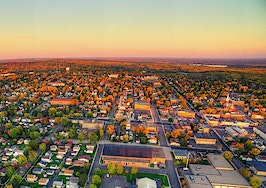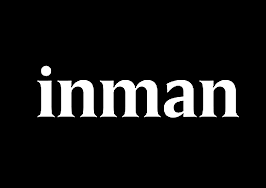Clea Whitney didn’t know it, but she was moving to the Las Vegas area at the worst possible time.
As a single mother trying to make her way into the real estate business, Whitney bought a home for herself and her two boys near the peak of the Vegas-area housing bubble in 2006. Then the bubble popped, sending prices into freefall.
Whitney spent the next decade upside-down on her own home, she said. She spent that time learning how to handle short sales, repossessions and the other most common tricks of the real-estate trade in the post-crash Las Vegas landscape.

Clea Whitney | Clea’s Moapa Valley Realty
“People have to buy and sell,” said Whitney, broker-owner at Clea’s Moapa Valley Realty. “It’s just a part of the cycle. I don’t like the cycle. But I really like this market.”
The Las Vegas home market looks remarkably different today as the Inman community gathers there this week for the company’s Luxury Connect conference. Home values have reached levels unseen since the bubble of 2006, buyers are coming from more places, and homes are selling so fast that agents at times can barely keep up, according to interviews with local brokers.
Las Vegas has always attracted its share of out-of-state buyers, particularly from California. But their effect on the market’s higher price points has reached unseen levels since the start of the pandemic, said Ivan Sher, one of the city’s top luxury brokers.
“Moreso than ever, we’re seeing the uber-wealthy and the wealthy moving to Las Vegas for the [lack of] state income tax, as well as some of the sociopolitical positioning that’s happening in some of these states,” the owner of the Ivan Sher Group told Inman.
A new paradigm
The entire Las Vegas market has undergone a rapid upturn, but perhaps nowhere is that more pronounced than in the market for the city’s glitziest properties.
In years past, the luxury market in Las Vegas maxed out at prices of $10 million to $15 million, Sher said. Now, the very top luxury listings are going in the mid-20 millions — with a couple of current listings in the $30 million to $40 million range, he said.

Ivan Sher | The Ivan Sher Group
Sher said that before the pandemic, approximately a quarter of his luxury buyers were from out of state. Today, the vast majority of his buyers are from other states like California, he said.
And unlike previous years, when an outsized share of out-of-state buyers were migrating from Southern California, the labor-market disruptions of the pandemic have freed up more high earners across the country to descend upon areas like Las Vegas.
“Now the gates from Northern California have opened up — the billionaires from Silicon Valley, and the hundred-millionaires,” Sher said. “We’re even getting clients from Chicago and New York.”
Out-of-state buyers are driven to the Las Vegas area by a variety of factors, from the city’s more attainable luxury property prices to its favorable tax laws.
Nevada has no state income taxes, and residents pay far less in property taxes than some other states. For buyers with high incomes and a lot of money tied up in real estate, that’s a formula too sweet to pass up, Sher said.
“The phone calls that I get are people saying we’re done, we’ve made a decision,” Sher said. “We have no problem paying money for things in taxes, provided we’re actually getting a benefit.”
Some out-of-state buyers have also expressed they favor Nevada for its politics, venting to Sher that they disagree with stances their state leaders have taken on the pandemic and other issues.
But the same factors that are attracting wealthier buyers are also prompting homeowners in more affordable price points to move away.
Priced-out locals
For Las Vegas-area homeowners like Whitney who waited out the market for years while their homes were underwater — or those who simply bought when the market was down — recent years have offered opportunities to cash in.
One Las Vegas hospitality employee who was laid off during the pandemic is selling his home and moving to Texas. He bought the 1,100-square-foot home in 2018 for just under $200,000 in the Las Vegas suburb of Henderson. His agent, Lisa Vaughn, expects him to pocket roughly $120,000 in equity.

Lisa Vaughn | Life Realty District
Vaughn, an agent at Life Realty District, also works with buyers who are seeking homes in the Henderson area. The typical price range her clients end up in ranges between $300,000 and $450,000, she said.
Some of her clients have had to get increasingly creative with their offers — and make big concessions — to win in this extra-competitive price point.
One such buyer ended up winning a bidding war only after offering $20,000 above list price, taking on a solar lease, and agreeing to let the seller live there for an extra 30 days with no leaseback, Vaughn said.
Another client simply threw up their hands altogether, Vaughn said.
“They decided to remove themselves from the market because they weren’t willing to pay above list,” Vaughn said. “They would rather pay $2,000 in rent.”
Some Las Vegas homeowners have sold their homes in the city and moved to rural communities like Logandale and Moapa, located about 60 miles northeast of the Las Vegas strip, Whitney said.
Property values in these two outlying towns have risen by approximately 40 percent since February 2020, according to the Zillow Home Value Index. The total dollar value of the typical home grew by more in these two towns than in any other community in the greater Las Vegas metro area.
For the Las Vegas sellers Whitney worked with, the city had simply gotten too busy, and prices were too good to pass up.
Still, Whitney, a veteran of the Vegas-area housing crash, said she is unsure what the future holds for home prices in the greater Las Vegas area.
“If the rates go up, how are people going to afford the homes?” Whitney said. “We’re so vulnerable to those rates that it makes my stomach hurt.”
While rising mortgage rates could place some downward pressure on home prices, there are strong fundamental reasons to remain bullish on the Las Vegas home market in the future, Sher said.
“I’ve seen no indicators that things are going to slow down,” Sher said. “I think 2022 is going to be a strong year. We have a new normal, and the new normal is this fast-paced, quick market [with] high turnover of inventory.”







